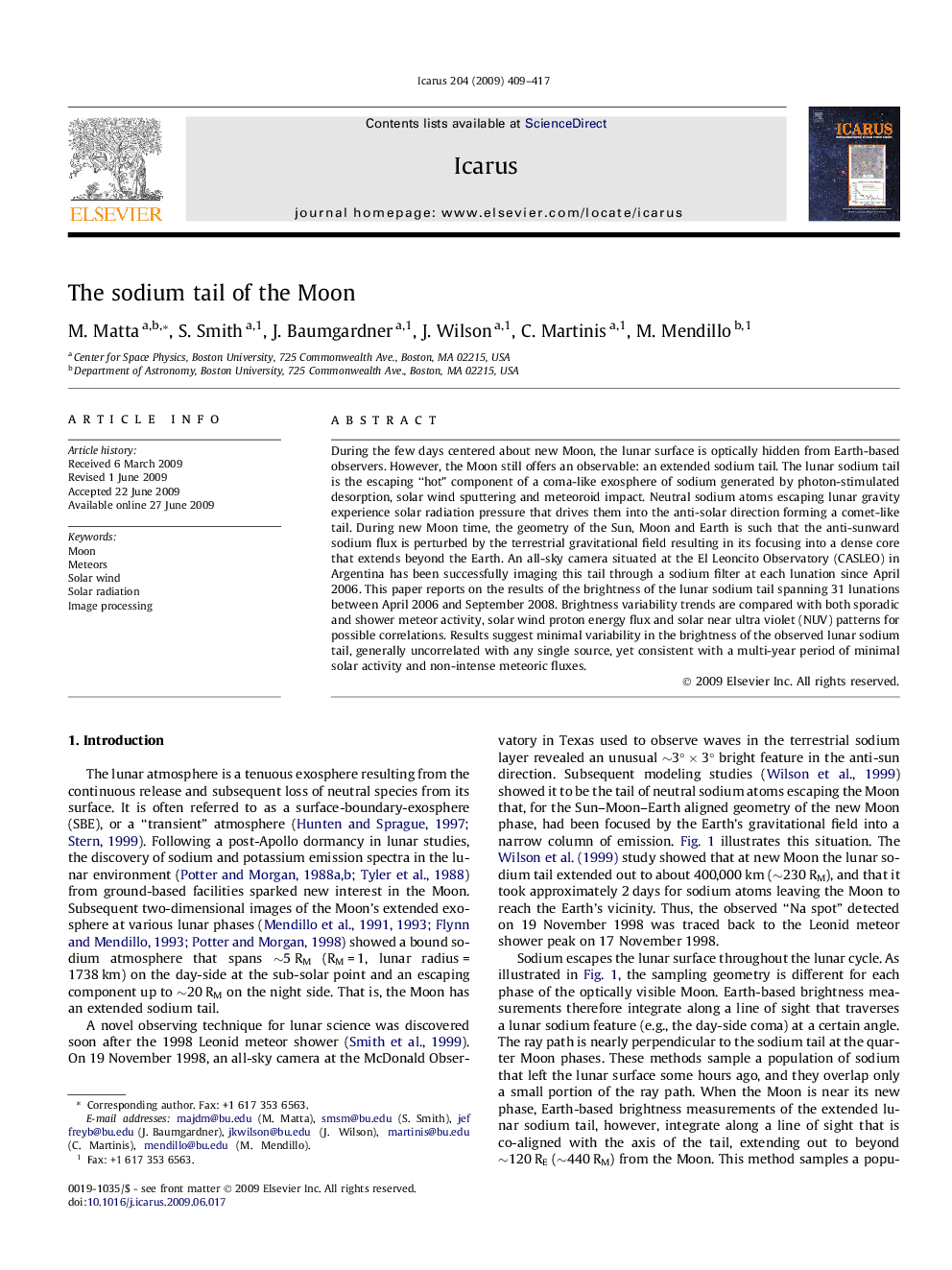| کد مقاله | کد نشریه | سال انتشار | مقاله انگلیسی | نسخه تمام متن |
|---|---|---|---|---|
| 1774743 | 1021173 | 2009 | 9 صفحه PDF | دانلود رایگان |

During the few days centered about new Moon, the lunar surface is optically hidden from Earth-based observers. However, the Moon still offers an observable: an extended sodium tail. The lunar sodium tail is the escaping “hot” component of a coma-like exosphere of sodium generated by photon-stimulated desorption, solar wind sputtering and meteoroid impact. Neutral sodium atoms escaping lunar gravity experience solar radiation pressure that drives them into the anti-solar direction forming a comet-like tail. During new Moon time, the geometry of the Sun, Moon and Earth is such that the anti-sunward sodium flux is perturbed by the terrestrial gravitational field resulting in its focusing into a dense core that extends beyond the Earth. An all-sky camera situated at the El Leoncito Observatory (CASLEO) in Argentina has been successfully imaging this tail through a sodium filter at each lunation since April 2006. This paper reports on the results of the brightness of the lunar sodium tail spanning 31 lunations between April 2006 and September 2008. Brightness variability trends are compared with both sporadic and shower meteor activity, solar wind proton energy flux and solar near ultra violet (NUV) patterns for possible correlations. Results suggest minimal variability in the brightness of the observed lunar sodium tail, generally uncorrelated with any single source, yet consistent with a multi-year period of minimal solar activity and non-intense meteoric fluxes.
Journal: Icarus - Volume 204, Issue 2, December 2009, Pages 409–417